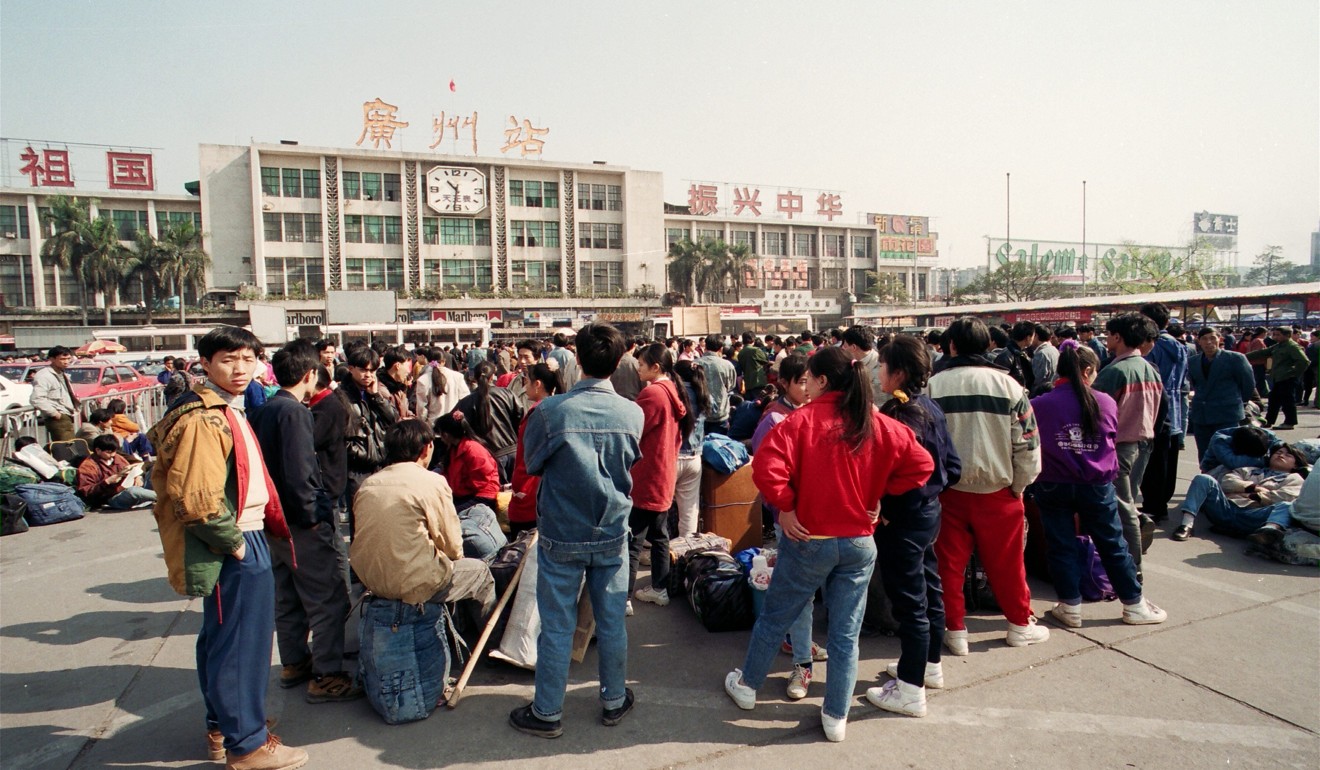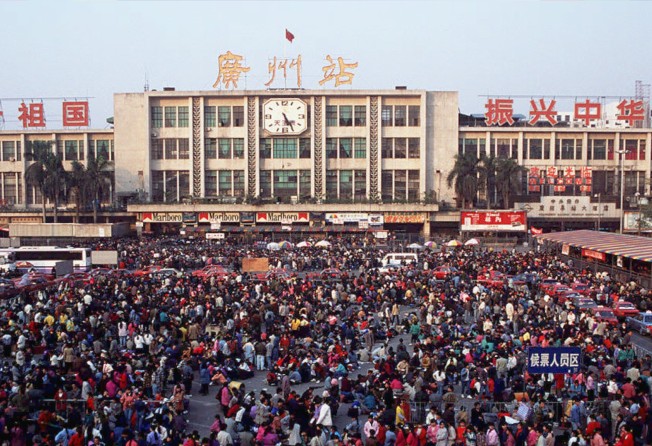
After four decades, it’s end of line for iconic Guangzhou Railway Station
Migrant workers embark on last Lunar New Year journeys from station that played key role in Guangdong’s economic boom

Migrant workers are clambering aboard rickety old trains at Guangzhou Railway station for Lunar New Year journeys home for the last time, with the 43-year-old building to be transformed into a high-speed rail hub from next year.
Many are taking pictures to remember the four-storey, Soviet-style station, which has a proud place in the story of China’s economic rise and was a focal point for the waves of migrant workers it spawned.
After extensive renovations it will be reborn as a high-speed rail station, with most ordinary trains moved to the city’s new Tangxi Railway Station.
“Compared to all those skyrocketing buildings, the historic Guangzhou Railway Station is, actually, the real landmark of Guangdong for most migrant workers who once worked across the province,” said 46-year-old He Yong, who worked for a garment factory in Guangzhou last year.
“It’s the ninth year for me to go back home from the railway station for a Lunar New Year,” he said as he queued at the ticket office on the afternoon of January 25 along with three other men from Hunan province. Three hours later, after handing over about 200 yuan (US$31.60), they left with four standing-room-only tickets to Baoji in Shaanxi province.

They are among the hundreds of millions of migrant workers in mainland cities expected to head home for the most important festival of the year, with the national transport system bracing for an estimated 3 billion journeys on trains, buses and ferries over the 40-day holiday period, which started on February 1.
Travelling on standard trains was the cheapest and most popular way for ordinary workers to get home for decades amid the manufacturing boom that followed China’s opening up to the world at the end of the 1970s.
In 1974, the 110,000 square metre exhibition hall of the Chinese Export Commodities Fair was built in Guangzhou’s Liuhua subdistrict. Soon afterwards, the grand Guangzhou Railway Station was completed nearby, along with the five-star Oriental Hotel and the Liuhua Hotel, designed to receive foreign visitors to the fair.
Some large public buildings surrounding the station, like the telegram and telephone building and post office, were completed one after another as the area became the centre of Guangdong’s foreign trade hub.
From the early 1990s, when manufacturing really started booming in the Pearl River Delta following investments from Hong Kong, Macau and Taiwan, passenger numbers surged, with the railway station becoming the first port of call for tens of millions of migrant workers from across the country rushing to Guangzhou to seek their fortune.
In the early 2010s, when manufacturing employment peaked, around 140 million people would travel home from the Pearl River Delta for Lunar New Year family reunions. But only 32 million cheap train tickets were available.

In January 2008, tens of thousands of workers were stranded at the station’s square for over a week, unable to get home when a massive snowstorm swept across southern China, causing severe delays. Soldiers and police were later sent in to control the desperate crowd in what was one of the worst transport crises at the nation’s busiest travel time of the year.
The railway station was better prepared in February 2016 when more than 100,000 people were again stranded by a snowstorm.
China’s railway network was 127,000km long at the end of last year, including 25,000km of high-speed lines, but there are now more transport options available. A total of 33 million people will use ride-sharing services to get home this year, three times the total of the previous two years, according to Chinese ride-hailing giant Didi Chuxing.
“In 1992, it took more than 30 hours for me to go to Guangzhou from my hometown, a remote rural village in Hunan province, taking multiple journeys by train and bus,” said Luo Qiyuan, who runs a factory that makes shoes. “I was a poor migrant workers at that time. Now I have my own factory and it takes only about half a day to go back home from Guangzhou via high-speed rail or driving myself.”